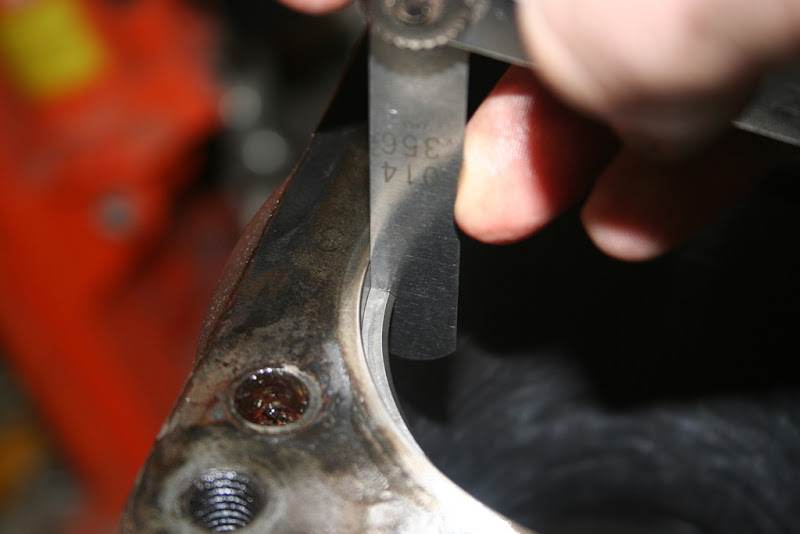Now that the block has been prepped, it's time to start the actual build process.
To help me with this, I had to call up my nerdiest friend, Chris.
We started by pulling off all of the old piston rings. Be careful when doing this as all the heat from the motor will have made them brittle and prone to breakage when bent.
Once all of the rings were off I inspected the ring lands to make sure that they were reusable and they all checked out fine.
Next we installed the new piston rings.
Make sure that you install the rings with the gaps facing the correct direction as advised by whatever rebuild reference you are using. The point here is so that none of the gaps are in the same place.
Next we moved on to the crankshaft main bearings.
We cleaned the block several times with Brakleen to make sure that it was nice and free of debris.
Then we installed the bearings making sure that they all ended up in their proper locations.
So fresh and so clean.
Next we lubed up the rear of the crankshaft and installed the rear main seal onto the crank. Nissan says that this is incorrect, but they are chuckleheads and this way is best.
Then, we lubed up all of the bearing journals with 20/50 motor oil and laid the crankshaft into the bearings, being extra careful not to ding the rear main seal or the journals on the crankshaft on the way in.
The first cap to install is the rear main cap. This slides into the void shown below very snuggly. We ran 1" of SuperBlack RTV on each corner of the block to ensure a tight seal.
Once the cap is installed, we slid the rubber seals, and shim nails into the RTV filled cap voids.
Then we installed the rest of the caps, starting with the front and working our way back to the rear main. After they were all installed, we followed the proper torque order and torqued them all to the recommended 40ft/lbs.
Now that the crankshaft is installed, it is time to install the pistons.
We installed the connecting rod bearings into the rods, and removed the end caps.
Then, using a piston ring compressor, we cranked the rings down to prep them for installing into the block.
We inserted the piston into the block rod first until the piston ring compressor stopped on the gasket surface of the block. Then, using a shop towel and the wooden end of a hammer, we banged the piston into place being careful not to lose the connecting rod bearings from below, or ding the crankshaft journals. It is also a good idea to spin the crank until the piston that you are installing would be at top of its stroke. That way the connecting rod can seat correctly on the crank journal.
Once the piston was in, we turned the block on it's side to thumb tighten the rod nuts.
Repeat these steps for all six pistons.
Flip the block and torque all of the connecting rod bolts to spec and you're done.
Rotating assembly assembled.




















































